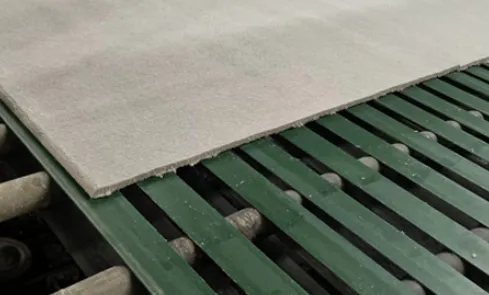- Afrikaans
- Albanian
- Amharic
- Arabic
- Armenian
- Azerbaijani
- Basque
- Belarusian
- Bengali
- Bosnian
- Bulgarian
- Catalan
- Cebuano
- Corsican
- Croatian
- Czech
- Danish
- Dutch
- English
- Esperanto
- Estonian
- French
- German
- Greek
- Hindi
- Indonesian
- irish
- Italian
- Japanese
- Korean
- Lao
- Malay
- Myanmar
- Norwegian
- Norwegian
- Polish
- Portuguese
- Romanian
- Russian
- Serbian
- Spanish
- Swedish
- Thai
- Turkish
- Ukrainian
- Uzbek
- Vietnamese
نوفمبر . 26, 2024 21:34 Back to list
Uses and Benefits of Mineral Fiber Ceiling Planks for Modern Construction
Mineral Fiber Planks A Sustainable Choice for Modern Construction
In the realm of construction and interior design, the choice of materials can significantly impact not only the aesthetics but also the functionality and sustainability of a project. One increasingly popular option in the industry is mineral fiber planks. These innovative materials combine various properties that make them an excellent choice for both commercial and residential applications. This article will delve into the features, benefits, and applications of mineral fiber planks, highlighting their role in promoting sustainable building practices.
What Are Mineral Fiber Planks?
Mineral fiber planks are a type of acoustic ceiling tile made primarily from inorganic minerals such as gypsum, perlite, and various types of fibers. They are engineered to provide superior sound absorption, thermal resistance, and fireproof properties. Unlike traditional materials, mineral fiber planks are designed to enhance indoor environments, making them suitable for offices, schools, hospitals, and other public spaces that require a high level of comfort and safety.
The manufacturing process of mineral fiber planks typically involves mixing natural mineral compounds with fibers, then compressing and curing the mixture. This procedure not only creates a durable and lightweight product but also allows for various textural and aesthetic finishes, catering to the diverse needs of architects and designers.
Key Benefits of Mineral Fiber Planks
1. Acoustic Performance One of the standout features of mineral fiber planks is their exceptional ability to absorb sound. This is particularly important in environments where noise reduction is critical, such as open office spaces and educational institutions. The sound-absorbing qualities help create quieter, more productive environments, promoting better concentration and reduced stress levels.
2. Fire Resistance Safety is a non-negotiable aspect of any construction project. Mineral fiber planks inherently possess fire-resistant properties, making them an ideal choice for building codes that require materials with high fire ratings. This characteristic provides peace of mind, knowing that the space is resilient against fire hazards.
3. Thermal Insulation Beyond sound and fire safety, mineral fiber planks also contribute to energy efficiency. They provide effective thermal insulation, helping to maintain consistent indoor temperatures and reducing heating and cooling costs. This translates to a smaller carbon footprint and aligns with modern sustainability goals.
mineral fiber planks

4. Sustainability Many mineral fiber planks are manufactured using recycled materials, making them a more environmentally friendly option compared to conventional materials. Their production process often involves less energy consumption and lower emissions, contributing to sustainable building practices. Furthermore, these planks are 100% recyclable, ensuring they can be reused or repurposed at the end of their life cycle.
5. Aesthetic Versatility Available in a range of styles, colors, and finishes, mineral fiber planks can complement various design themes, from contemporary to classic. Their ability to blend seamlessly into any interior space is a significant advantage for architects and designers seeking to create visually appealing environments.
Applications of Mineral Fiber Planks
Mineral fiber planks are versatile enough for a broad array of applications. Commercial settings, such as offices and retail stores, utilize these materials to enhance acoustics and aesthetics. Educational institutions rely on mineral fiber ceilings to provide a conducive learning environment and improve sound quality in classrooms.
In healthcare facilities, where sound control and hygiene are paramount, mineral fiber planks also play a vital role. Their non-porous surface resists mold and mildew growth, ensuring a clean and safe environment for patients and staff alike.
Moreover, mineral fiber planks can be easily installed and modified, allowing for flexibility in design. They can be integrated into various ceiling grid systems or used as wall panels for added acoustic benefits.
Conclusion
In summary, mineral fiber planks represent a smart and sustainable choice for modern construction and design projects. Their remarkable properties—ranging from sound absorption and fire resistance to energy efficiency—make them an appealing option for a wide variety of applications. As the construction industry continues to evolve, integrating environmentally friendly materials like mineral fiber planks can help pave the way for safer, more sustainable building practices, ensuring a healthier planet for generations to come. Whether used in commercial, educational, or healthcare settings, these planks are undoubtedly a vital component of forward-thinking architecture.
-
Transform Interiors with PVC Gypsum Ceiling: A Stylish, Durable, and Moisture-Resistant SolutionNewsMay.19,2025
-
The Smart Interior Upgrade: Discover the Durability and Versatility of Gypsum Ceiling Access Panel SolutionsNewsMay.19,2025
-
The Smart Choice for Interior Design: Discover the Value of PVC Gypsum Ceiling SolutionsNewsMay.19,2025
-
Mineral Fiber Ceiling Tiles: The Smart Blend of Performance and AestheticsNewsMay.19,2025
-
Mineral Fiber Ceiling Tiles: The Superior Choice Over Gypsum for Sound and Fire SafetyNewsMay.19,2025
-
Mineral Fiber Ceiling Tiles: Eco-Friendly Strength and Style for Every CeilingNewsMay.19,2025







